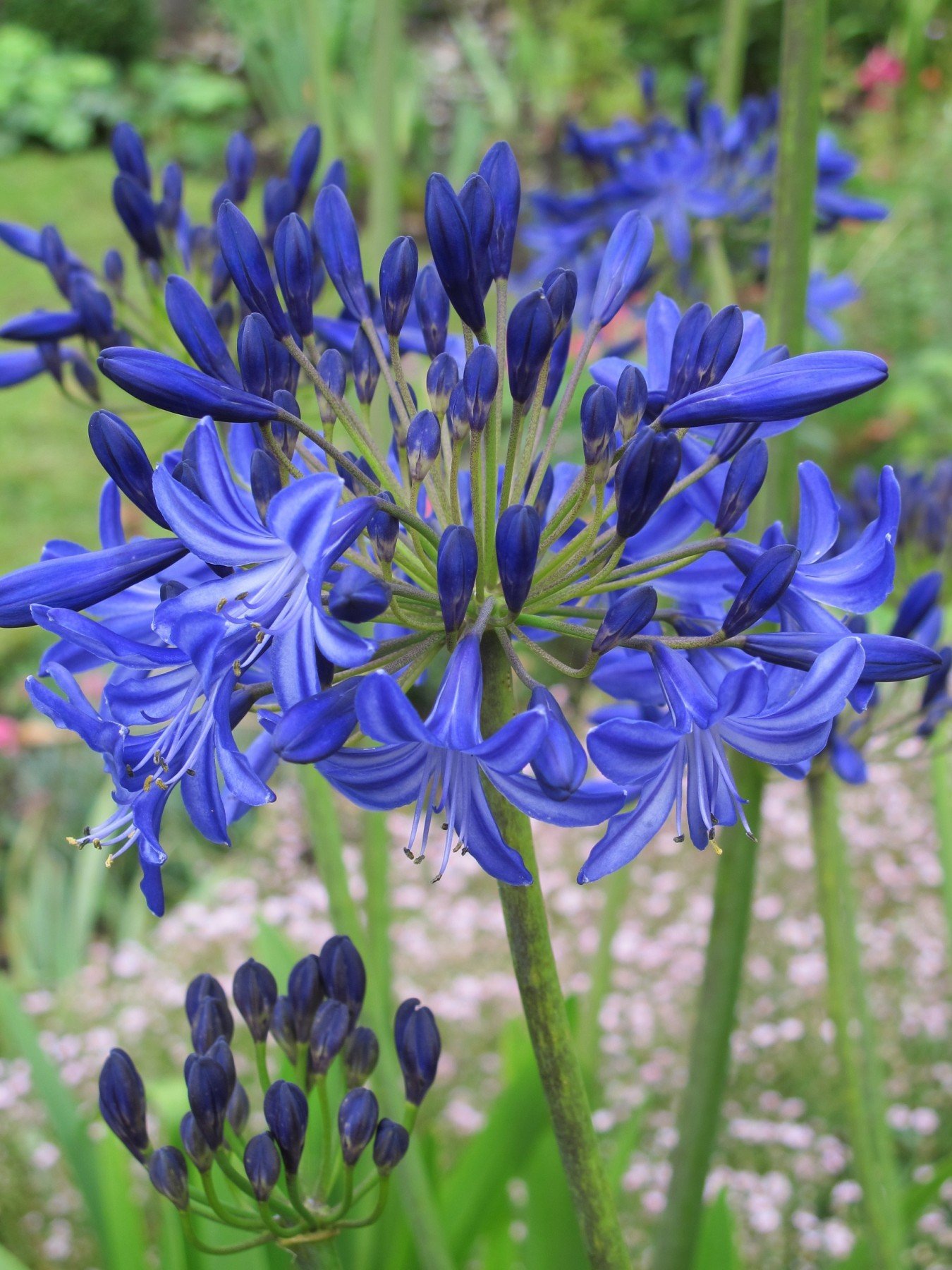Agapanthus Friend Plants: Perfect Pairings for Your Garden
Agapanthus Friend Plants: Perfect Pairings for Your Garden
Blog Article
Releasing the Secret to Successful Agapanthus Growing: Idea for a Flourishing Yard
In the realm of gardening, growing agapanthus effectively calls for a critical approach that includes numerous aspects of plant treatment. By understanding the nuances of agapanthus cultivation, one can develop an atmosphere where these plants prosper and flower abundantly.
Planting Agapanthus: Finest Practices
When planting Agapanthus, appropriate dirt preparation is important for guaranteeing effective development and development of these attractive flowers. Agapanthus, typically called Lily of the Nile or African lily, flourishes in well-draining soil with a somewhat acidic to neutral pH level - Agapanthus. Prior to growing, it is vital to modify heavy clay soils with raw material such as garden compost or peat moss to improve drainage and supply essential nutrients for the plants
To grow Agapanthus, pick an area that receives full sunshine to partial shade, as this will promote healthy and balanced development and abundant flowering. Dig an opening twice the size of the plant's root ball and put the Agapanthus at the exact same deepness it was previously growing. Carefully backfill the opening with soil, pushing down securely to get rid of any type of air pockets around the origins.
Water the recently grown Agapanthus completely and proceed to keep the soil equally wet, especially throughout the plant's active expanding period. Agapanthus. Applying a well balanced plant food once a month can even more support the plant's development and flowering. By complying with these finest practices for growing Agapanthus, you can create a spectacular display of these fascinating blossoms in your yard
Perfect Soil Conditions for Agapanthus
For optimal development and growing success of Agapanthus plants, making sure the dirt problems are ideal is important. Agapanthus favors soil that is rich in nutrients, so incorporating a well balanced plant food during the expanding season can promote healthy growth and lively blooms.

Watering and Fertilizing Tips
To make certain healthy growth and dynamic blossoms, appropriate watering and fertilizing methods are vital for effective Agapanthus growing. Agapanthus plants benefit from normal watering, especially throughout the expanding period.
When it pertains to fertilizing Agapanthus, a well balanced fertilizer with equivalent components nitrogen, phosphorus, and potassium can be used in the spring to advertise healthy development and flowering. Slow-release fertilizers are ideal for offering nutrients progressively over an extensive period. Avoid over-fertilizing, as this can lead to extreme foliage development at the expenditure of flowers.
Furthermore, integrating raw material like compost right into the soil can improve nutrient levels and enhance soil structure, assisting in the general health of the Agapanthus plants. By following these watering and feeding tips, garden enthusiasts can ensure their Agapanthus plants grow and generate sensational display screens of blossoms.
Pruning and Deadheading Techniques
Correct pruning and deadheading techniques play an important duty in preserving the health and looks of Agapanthus plants, complementing the vital methods of watering and fertilizing for effective growing. Trimming Agapanthus includes removing spent blossom heads, dead or yellowing leaves, and total shaping of the plant to advertise better development. Deadheading, the procedure of eliminating faded blossoms, not only boosts the plant's look but additionally urges additional blooming.
When deadheading Agapanthus, it is a good idea to snip off the blossom stem at the base using sharp, clean shears. This process reroutes the plant's energy from seed production back right into root and foliage growth, promoting a much healthier and a lot more durable plant. Routine deadheading can prolong the flowering period of Agapanthus and prevent self-seeding, which can lead to congestion.
In terms of pruning, Agapanthus generally gain from a light trim after blooming to clean up the plant and urge fresh growth. Reducing the spent blossom stems and removing any type of dead or damaged foliage assists preserve the plant's vigor and general look. Nevertheless, it is necessary to avoid cutting into the crown of the plant, as this can compromise its wellness.

Protecting Agapanthus From Pests and Diseases
Implementing effective pest and disease monitoring strategies is important to safeguarding the health and vitality of Continued Agapanthus plants in farming. Agapanthus are usually sturdy plants, but they can still succumb to numerous insects and conditions if not properly cared for. One common parasite that influences Agapanthus is the Agapanthus borer, a caterpillar that passages right into the plant, triggering damages to the blossoms and fallen leaves. To avoid invasions, normal examination of the plants is necessary. If borers are found, they can be manually eliminated, or insecticidal soap can be used as a control action.
In addition to bugs, Agapanthus are prone to illness such as root rot and fungal fallen leave places. By staying attentive and attending to bug and condition issues without delay, gardeners can aid their Agapanthus prosper and prosper.

Conclusion
To conclude, successful cultivation of agapanthus needs correct planting strategies, ideal soil problems, ample watering and feeding, routine pruning and deadheading, and defense from illness and pests. By following these his comment is here tricks and suggestions, gardeners can ensure a growing yard full of beautiful agapanthus blooms. Agapanthus. Bear i loved this in mind to preserve constant care and focus to information to promote the health and long life of these stunning plants
When planting Agapanthus, proper dirt preparation is crucial for guaranteeing successful growth and growth of these lovely flowers.Water the newly grown Agapanthus completely and continue to maintain the soil uniformly damp, specifically throughout the plant's active growing season.For optimum growth and blooming success of Agapanthus plants, making sure the dirt problems are excellent is vital. When transplanting or growing Agapanthus, guarantee the dirt is well-prepared to provide the needed foundation for the plants to establish themselves efficiently. One common bug that affects Agapanthus is the Agapanthus borer, a caterpillar that tunnels into the plant, causing damage to the blossoms and leaves.
Report this page